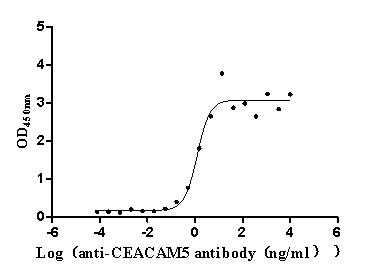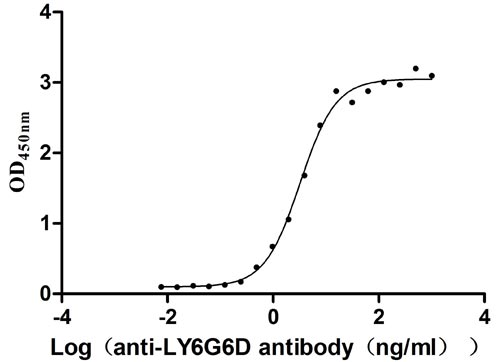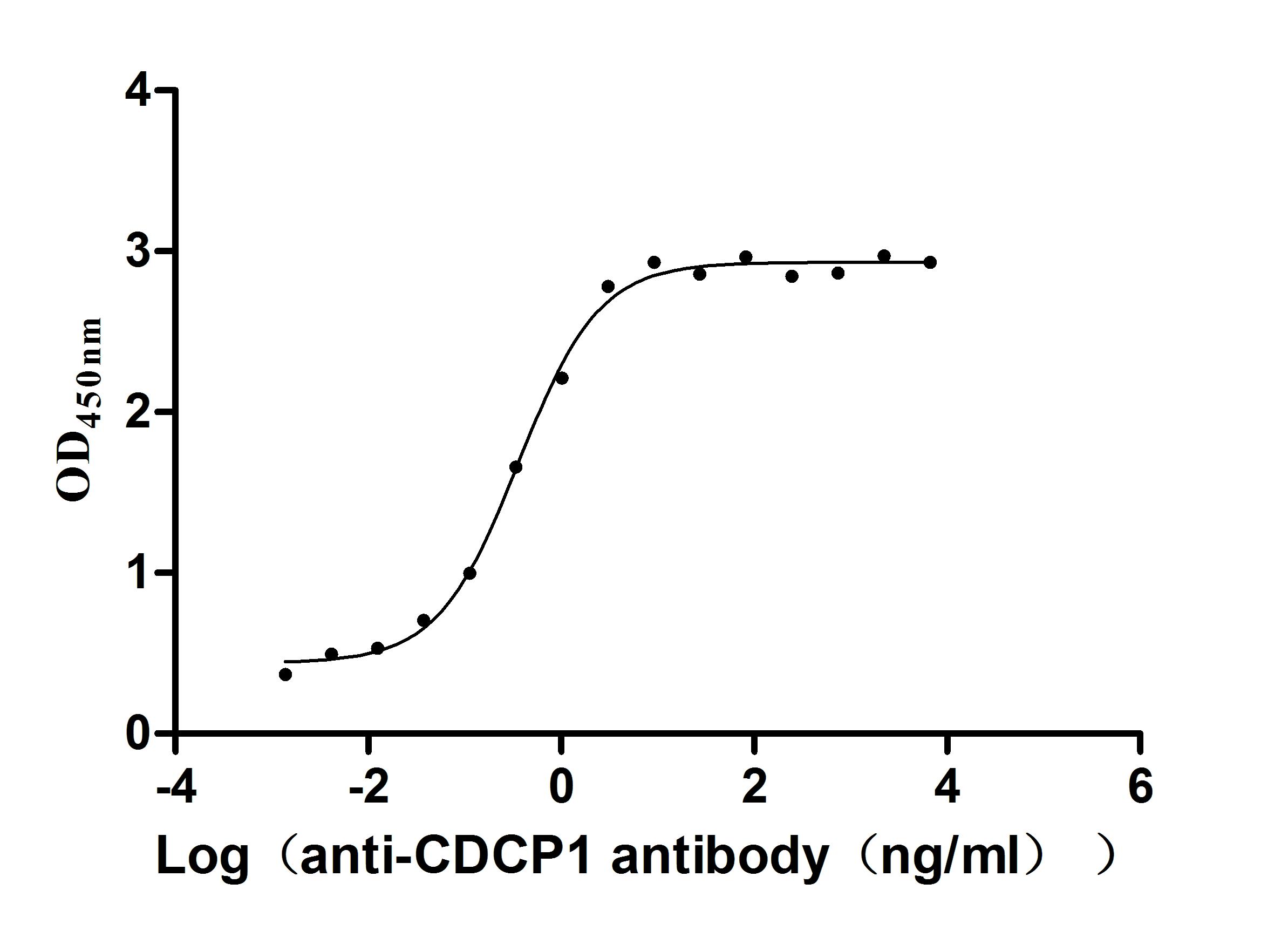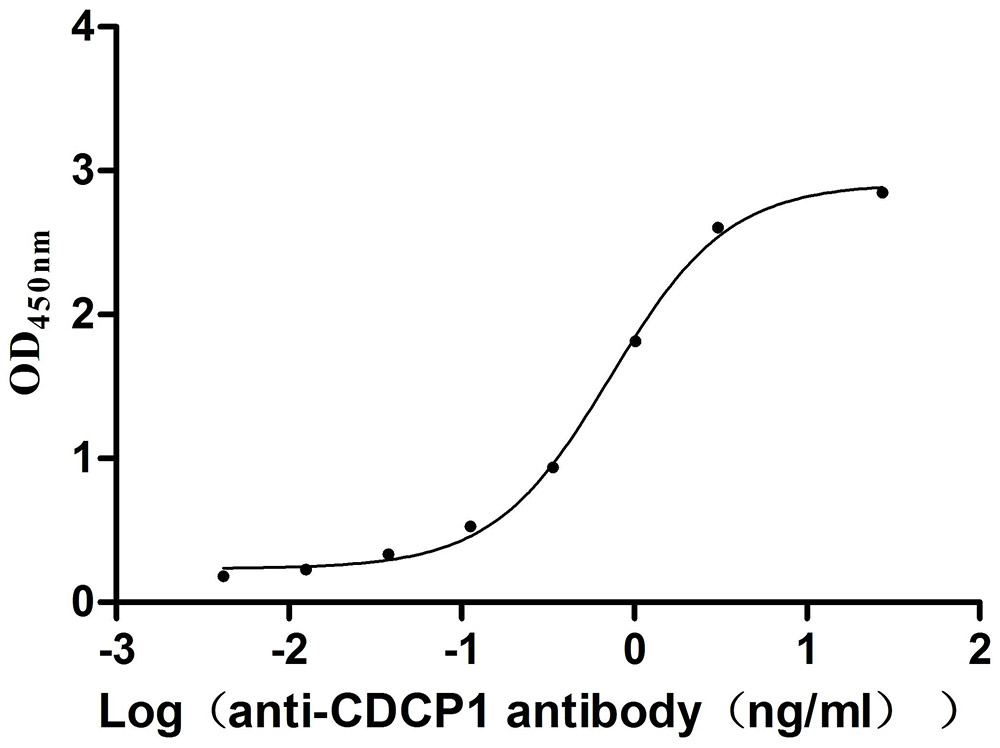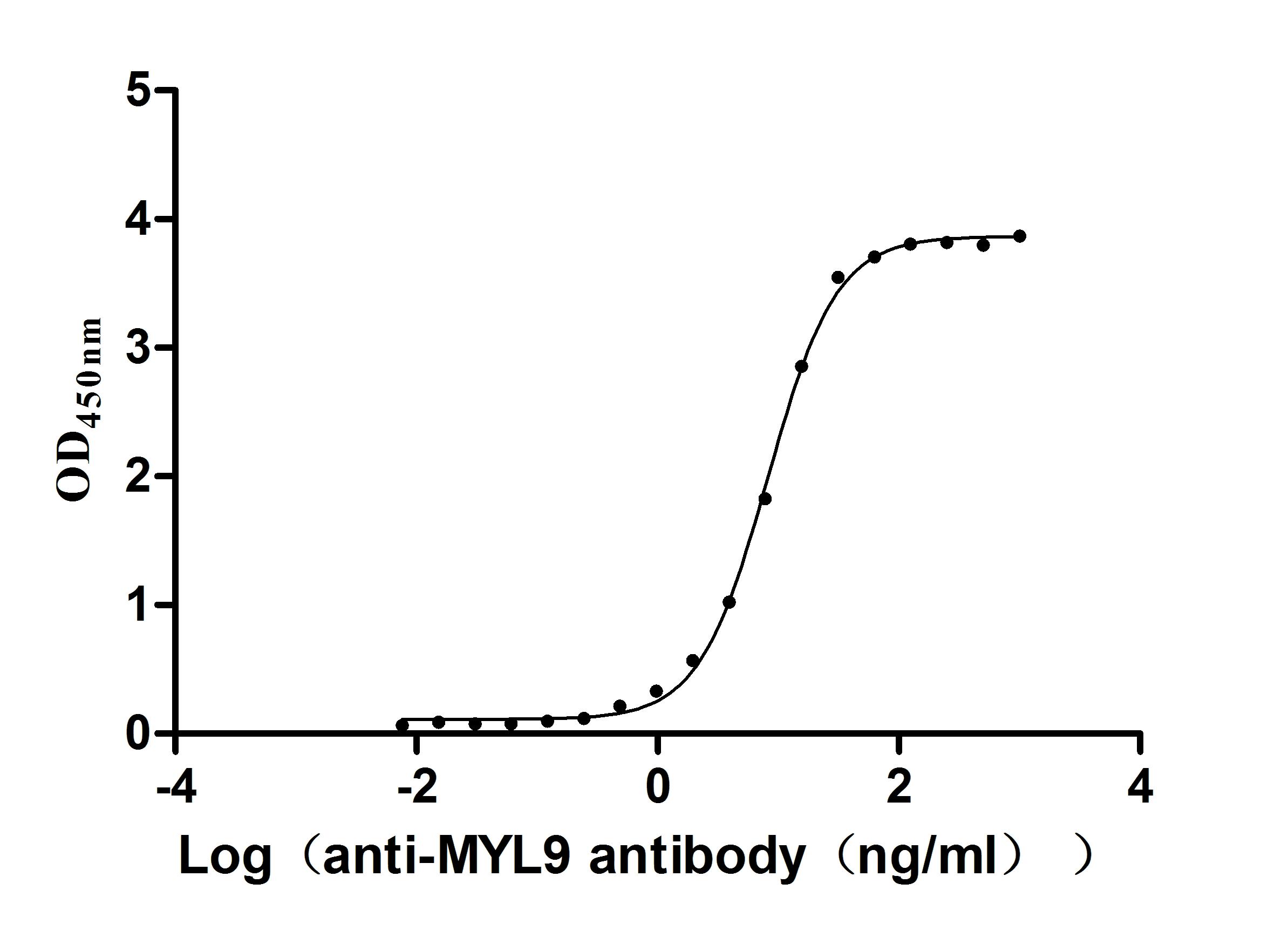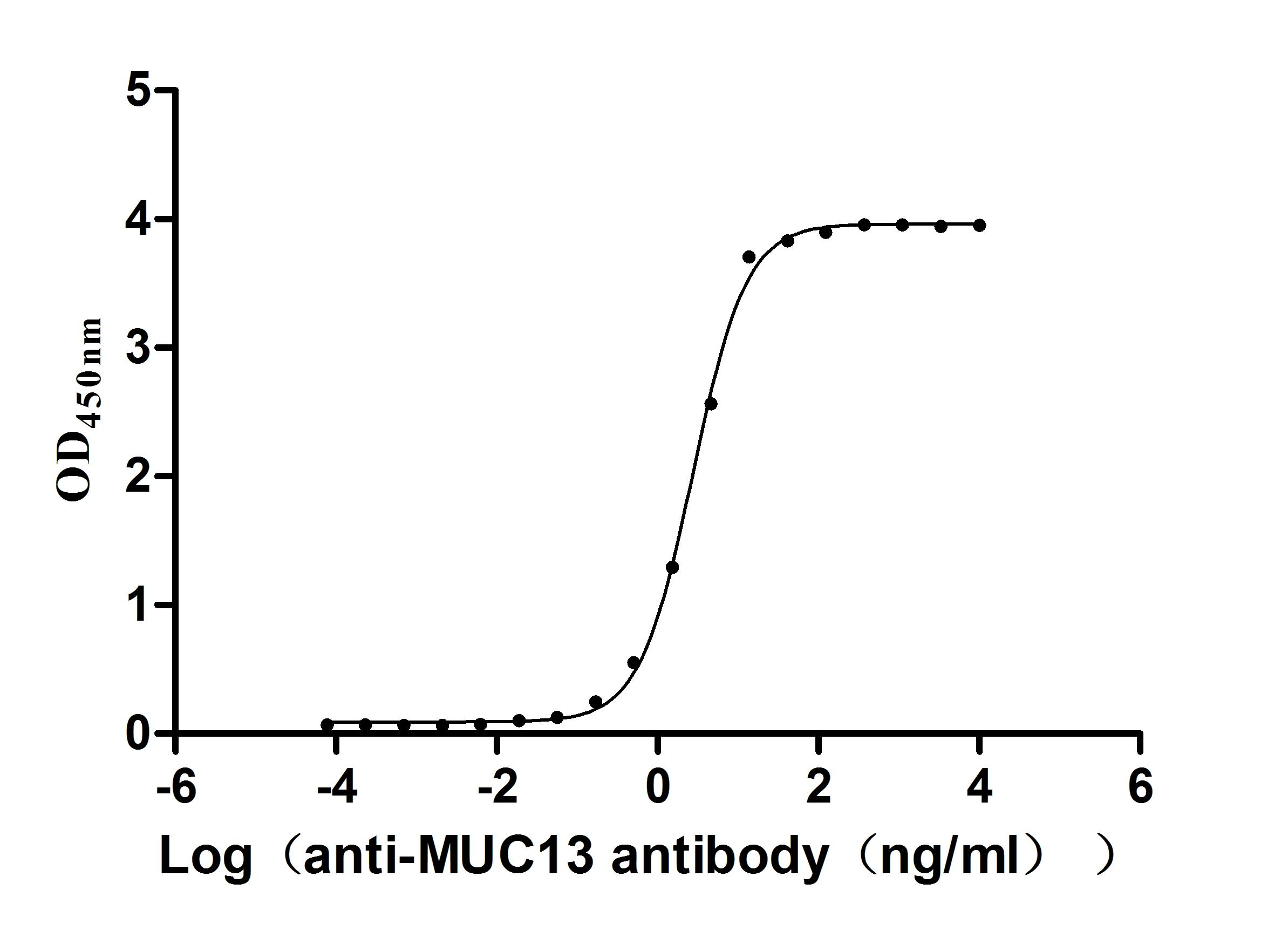Recombinant Human E3 ubiquitin-protein ligase Arkadia (RNF111), partial
-
中文名称:人RNF111重组蛋白
-
货号:CSB-YP741051HU
-
规格:
-
来源:Yeast
-
其他:
-
中文名称:人RNF111重组蛋白
-
货号:CSB-EP741051HU
-
规格:
-
来源:E.coli
-
其他:
-
中文名称:人RNF111重组蛋白
-
货号:CSB-EP741051HU-B
-
规格:
-
来源:E.coli
-
共轭:Avi-tag Biotinylated
E. coli biotin ligase (BirA) is highly specific in covalently attaching biotin to the 15 amino acid AviTag peptide. This recombinant protein was biotinylated in vivo by AviTag-BirA technology, which method is BriA catalyzes amide linkage between the biotin and the specific lysine of the AviTag.
-
其他:
-
中文名称:人RNF111重组蛋白
-
货号:CSB-BP741051HU
-
规格:
-
来源:Baculovirus
-
其他:
-
中文名称:人RNF111重组蛋白
-
货号:CSB-MP741051HU
-
规格:
-
来源:Mammalian cell
-
其他:
产品详情
-
纯度:>85% (SDS-PAGE)
-
基因名:RNF111
-
Uniprot No.:
-
别名:RNF111; E3 ubiquitin-protein ligase Arkadia; EC 2.3.2.27; RING finger protein 111; hRNF111; RING-type E3 ubiquitin transferase Arkadia
-
种属:Homo sapiens (Human)
-
蛋白长度:Partial
-
蛋白标签:Tag type will be determined during the manufacturing process.
The tag type will be determined during production process. If you have specified tag type, please tell us and we will develop the specified tag preferentially. -
产品提供形式:Lyophilized powder
Note: We will preferentially ship the format that we have in stock, however, if you have any special requirement for the format, please remark your requirement when placing the order, we will prepare according to your demand. -
复溶:We recommend that this vial be briefly centrifuged prior to opening to bring the contents to the bottom. Please reconstitute protein in deionized sterile water to a concentration of 0.1-1.0 mg/mL.We recommend to add 5-50% of glycerol (final concentration) and aliquot for long-term storage at -20℃/-80℃. Our default final concentration of glycerol is 50%. Customers could use it as reference.
-
储存条件:Store at -20°C/-80°C upon receipt, aliquoting is necessary for mutiple use. Avoid repeated freeze-thaw cycles.
-
保质期:The shelf life is related to many factors, storage state, buffer ingredients, storage temperature and the stability of the protein itself.
Generally, the shelf life of liquid form is 6 months at -20°C/-80°C. The shelf life of lyophilized form is 12 months at -20°C/-80°C. -
货期:Delivery time may differ from different purchasing way or location, please kindly consult your local distributors for specific delivery time.Note: All of our proteins are default shipped with normal blue ice packs, if you request to ship with dry ice, please communicate with us in advance and extra fees will be charged.
-
注意事项:Repeated freezing and thawing is not recommended. Store working aliquots at 4°C for up to one week.
-
Datasheet :Please contact us to get it.
相关产品
靶点详情
-
功能:E3 ubiquitin-protein ligase. Required for mesoderm patterning during embryonic development. Acts as an enhancer of the transcriptional responses of the SMAD2/SMAD3 effectors, which are activated downstream of BMP. Acts by mediating ubiquitination and degradation of SMAD inhibitors such as SMAD7, inducing their proteasomal degradation and thereby enhancing the transcriptional activity of TGF-beta and BMP. In addition to enhance transcription of SMAD2/SMAD3 effectors, also regulates their turnover by mediating their ubiquitination and subsequent degradation, coupling their activation with degradation, thereby ensuring that only effectors 'in use' are degraded. Activates SMAD3/SMAD4-dependent transcription by triggering signal-induced degradation of SNON isoform of SKIL. Associates with UBE2D2 as an E2 enzyme. Specifically binds polysumoylated chains via SUMO interaction motifs (SIMs) and mediates ubiquitination of sumoylated substrates. Catalyzes 'Lys-63'-linked ubiquitination of sumoylated XPC in response to UV irradiation, promoting nucleotide excision repair. Mediates ubiquitination and degradation of sumoylated PML. The regulation of the BMP-SMAD signaling is however independent of sumoylation and is not dependent of SUMO interaction motifs (SIMs).
-
基因功能参考文献:
- rkadia may regulate the pathogenesis and progression of hepatic fibrosis. PMID: 29286088
- Arkadia/RNF111 is able to lys-48 ubiquitination of Nrf2 protects Nrf2 from degradation thereby allowing Nrf2-dependent gene transcription. PMID: 29597191
- Results indicate a tumor-suppressive role of the ring finger protein 111 (Arkadia)-epithelial splicing regulatory protein 2 (ESRP2) axis in clear-cell renal cell carcinoma (ccRCC). PMID: 26522722
- These data show that the position occupied by W972 within wild-type Arkadia is critical for the function of its RING domain and that it depends on the nature of the residue at this position. PMID: 28647409
- Results suggest that -459CpG methylation in Sp1-binding site of RNF111 promoter transcriptionally decreases RNF111 expression, which inhibits TGF-beta/Smad signaling associated invasion in NSCLC cells. PMID: 26238425
- Study reports that the monomeric RING domains from the human E3 ligases Arkadia and Ark2C bind directly to free ubiquitin with an affinity comparable to that of other dedicated ubiquitin-binding domains. PMID: 26656854
- These data suggest that RNF111, together with the CRL4(DDB2) ubiquitin ligase complex, is responsible for sequential XPC ubiquitylation, which regulates the recruitment and release of XPC and is crucial for efficient progression of the NER reaction. PMID: 26151477
- Arkadia can both promote and inhibit gene expression, indicating that Arkadia's activity in transcriptional control may depend on the epigenetic context, defined by Polycomb repressive complexes and DNA methylation. PMID: 24912682
- Our findings establish RNF111 as a new STUbL that directly links nonproteolytic ubiquitylation and SUMOylation in the DNA damage response. PMID: 23751493
- findings indicate that Arkadia is not critical for regulating tumor growth per se, but is required for the early stages of cancer cell colonization at the sites of metastasis PMID: 23467611
- Arkadia is involved in arsenic-induced degradation of polysumoylated PML protein. PMID: 23530056
- RNF111-dependent neddylation activates DNA damage-induced ubiquitination PMID: 23394999
- FHL2 increases the stability of the TGF-beta pathway positive regulator Arkadia by inhibiting its ubiquitination and cooperates with Arkadia to activate TGF-beta signaling. PMID: 23212909
- We established that ARX polyA alterations damage the regulation of KDM5C expression. PMID: 23246292
- Determined the nuclear magnetic resonance solution structure of Arkadia's RING-H2 domain and revealed a (beta)betabetaalpha fold, fully consistent with the expected "cross-brace" mode of Zn(II)-ligation. PMID: 22411132
- Arkadia enhances transforming growth factor-beta signaling responses and supports its tumor-suppressing properties in colorectal cancer. PMID: 21998011
- RB1CC1 thus appears to play a unique role as a modulator of TGF-beta signaling by restricting substrate specificity of Arkadia. PMID: 21795712
- Arkadia complexes with clathrin adaptor AP2 and regulates EGF signalling. PMID: 20965945
- findings show that Arkadia regulates the levels of expression of c-Ski protein in cell-type-dependent fashion, and exhibits a tumour suppressor function by inhibiting tumour cell growth PMID: 19959502
- Arkadia protein intensifies TGF-beta-induced effects by marking c-Ski and inhibitory Smad7 for destruction--REVIEW PMID: 19898560
- Silencing of the Arkadia gene resulted in repression of transcriptional activities induced by TGF-beta and BMP, and accumulation of the Smad7 protein. PMID: 14657019
- Arkadia induces degradation of SnoN and c-Ski in addition to Smad7. PMID: 17510063
- Results show that Arkadia specifically activates transcription via Smad3/Smad4 binding sites by inducing degradation of the transcriptional repressor SnoN. PMID: 17591695
- Arkadia stimulates renal tubular epithelial to mesenchymal cell transition through degradation of Smad7. PMID: 18059455
- Functional analysis of the mouse counterpart PMID: 11298452
显示更多
收起更多
-
亚细胞定位:Nucleus. Cytoplasm. Nucleus, PML body.
-
蛋白家族:Arkadia family
-
组织特异性:Broadly expressed.
-
数据库链接:
Most popular with customers
-
Express system: Mammalian cell
Species: Homo sapiens (Human)
-
Recombinant Human Lymphocyte antigen 6 complex locus protein G6d (LY6G6D) (Active)
Express system: Yeast
Species: Homo sapiens (Human)
-
Recombinant Human CUB domain-containing protein 1 (CDCP1), partial (Active)
Express system: Mammalian cell
Species: Homo sapiens (Human)
-
Recombinant Mouse CUB domain-containing protein 1 (Cdcp1), partial (Active)
Express system: Mammalian cell
Species: Mus musculus (Mouse)
-
Recombinant Human Myosin regulatory light chain 12B(MYL12B) (Active)
Express system: E.coli
Species: Homo sapiens (Human)
-
Recombinant Human Urokinase-type plasminogen activator(PLAU) (Active)
Express system: Mammalian cell
Species: Homo sapiens (Human)
-
Recombinant Human Mucin-13(MUC13),partial (Active)
Express system: yeast
Species: Homo sapiens (Human)


